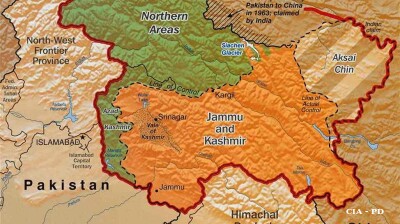As tensions continue to simmer between the world’s two largest economies, the issue of punitive tariffs imposed during the US-China trade war remains unresolved. Despite periodic negotiations and rhetorical overtures, Washington’s quest to impose hundreds of billions of dollars’ worth of tariffs on Chinese goods remains a clear and distinct possibility.
Beijing has long condemned these tariffs as unjust and politically motivated, but for Chinese leaders, removing them is about more than economics – it is a matter of national dignity, domestic legitimacy and international standing.
So how might China find a way to resolve the issue while being seen both at home and abroad as having saved face and secured a victory?
Quiet concessions, public strength
One possible path – arguably the most obvious for any long-time China-watchers – lies in the realm of diplomatic choreography through which Beijing would make real concessions behind closed doors while maintaining an image of unbending strength in public.
China could very quietly agree to broaden market access for American firms or enforce stricter intellectual property protections, areas where the US has long sought progress, while at the same time denying such deals have been reached to its 1.4bn residents.
These steps, though technically reforms, if ever exposed or even hinted at would be framed domestically not as yielding to American pressure but as part of China’s own modernisation drive.
State media would emphasise that any reciprocal lifting of tariffs is a recognition of China’s global economic clout rather than a concession extracted through pressure; such messaging being a vital part of a political system run by a Communist Party unable to appear weak in the eyes of its own population.
Multilateral leverage
Another strategy could see China using multilateral platforms to reframe the issue. Rather than seeking a purely bilateral resolution, Beijing might push for a broader framework on tariff reduction through the World Trade Organisation (WTO) or by deepening economic partnerships within BRICS or the Regional Comprehensive Economic Partnership (RCEP).
In this approach, the US would be portrayed as the outlier, clinging to outdated protectionism while the rest of the world pursues open trade. If Washington were eventually persuaded to drop or reduce tariffs as part of a broader global initiative, China would then present this as a win for multilateralism and global governance, promoted by Beijing of course, highlighting principles it now publicly champions.
Economic retaliation
There is also the option – less likely – of out-and-out retaliation by imposing targeted counter-tariffs or regulatory hurdles on American firms operating in China.
While this risks escalation, it can also create pressure for talks, provided it is done selectively and with plausible deniability, both aspects of bilateral trade negotiation China has long since mastered.
Beijing has already restricted exports of key industrial materials such as gallium and graphite, both crucial to American tech manufacturing. It may continue to tighten the screw in other sectors while signalling openness to negotiation. Such a two-pronged approach, punishment alongside the offer of resolution, or as it is oftentimes labelled in the West – carrot and stick – could help China appear both resolute and reasonable at the same time.
Domestic self-sufficiency as a ‘victory’
Perhaps the most face-saving route for Beijing, albeit another option few would wager on, would be to shift the focus entirely. Rather than framing tariff removal as the goal, China could present its long-term policy of economic self-reliance epitomised by its “dual circulation” strategy, as a successful response to American hostility.
In this narrative, tariffs would no longer matter because China would have weaned itself off dependence on US technology, consumers and capital. Any eventual rollback of US tariffs would then be interpreted not as a concession extracted through negotiation, but as an American retreat in the face of China’s resilience.
Real world politics
In reality though, any resolution must also align with US political realities. A deal that visibly rewards China would be politically toxic in Republican led Washington. Therefore, a compromise that allows both sides to claim victory is essential.
In terms of the importance of ‘face-saving’ in the modern-era there is little difference between Donald Trump and Chinese Communist Party sensibilities As such, this might involve phased tariff reductions linked to specific, verifiable reforms in China, especially in sectors where the US seeks a level playing field.
For Beijing, the key in this regard would be to ensure that any reforms are framed domestically not as bending to American will, but as aligned with President Xi Jinping’s vision of high-quality development and economic modernisation. In short – both parties win – or appear to do so.
Features

BEYOND THE BOSPORUS: Prosecutors make move on “fictitious export schemes” of Istanbul Gold Refinery
Observers point to intra-regime gangs seizing each other’s wealth, remember Erdogan’s “Hello Fatih” phone calls and ponder whether wanted man Turgay Ciner is in London.

Taliban visit to India upsets Pakistan, signals New Delhi's changing Afghan posture
Coinciding with the visit, Pakistan conducted military operations inside Afghanistan, followed by airstrikes on multiple border towns. Retaliation against Pakistan's police training facilities and border outposts followed.

Pakistan’s India-shaped chip on the shoulder, and why a peaceful coexistence is as elusive as ever
Pakistan must first redefine how it sees India - not solely as a threat to be contained but as a neighbour with whom coexistence is unavoidable. That psychological leap has eluded generations of Pakistani leaders.

Trump shocked by China’s move on rare earths, threatens more 100% tariffs
"Some very strange things are happening in China!" Trump wrote in a post on his Truth Social account on October 10, adding "They are becoming very hostile."


